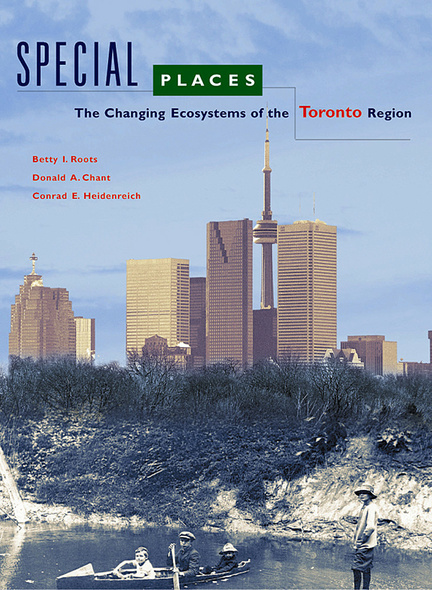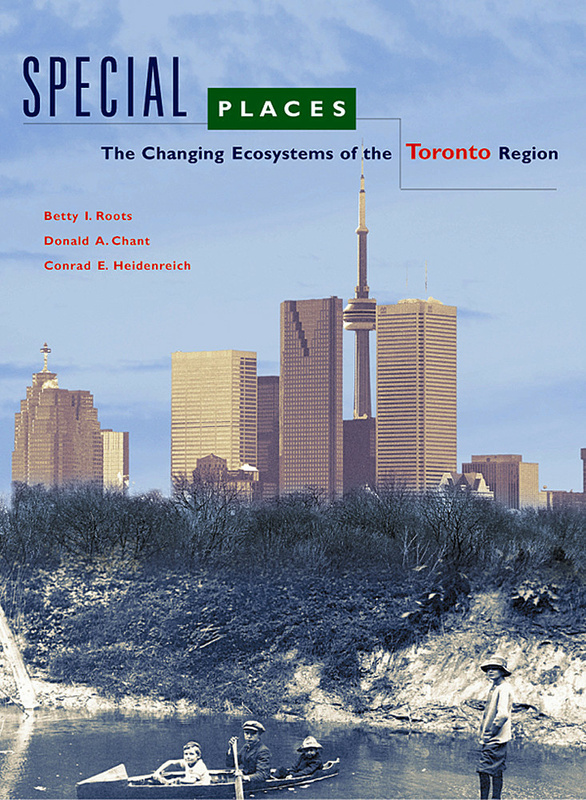Special Places
The Changing Ecosystems of the Toronto Region
High Park, Scarborough Bluffs, the Humber Valley, the Port Lands.These are among the special places of Toronto. Each is a uniqueecosystem within the busy urban region. Even though Torontonians thinkof the city as almost entirely built up, savannah or wetlands are onlya subway ride away. Special Places explores the changingecosystems of the Toronto area over this century, looking at theenvironmental conditions that influence the whole region and at thesurprising range of plants and animals you can still find in many ofits natural spaces.
Special Places explores the changing ecosystems of theToronto area over this century, looking at the environmental conditionsthat influence the whole region and at the surprising range of plantsand animals you can still find in many of its natural spaces.
In Special Places, a group of science professionals showhow actions in one location produce ripples in every direction. Changesin forest cover, for example, affect not only the organisms that livein the forest but also those that use it from time to time, such asmigrating birds and those that live in watersheds fed by waterhusbanded by forest cover. Changes in bird populations cause changes inthe populations of insects on which they feed; changes in insectpopulations affect the plants on which they feed; and so on.
As a new millennium arrives, it is time to take stock of our effecton the world around us and to consider the consequences. SpecialPlaces assesses how we can minimize the impact of human activityon the environment and even remedy some of the harm we have alreadydone. One way is to bridge the gap between scientists and decisionmakers by making the natural sciences more accessible to everyone.
Special Places was written at the initiative of the RoyalCanadian Institute, which is the oldest active scientific society inCanada and is dedicated to bringing the natural sciences to the public.Richly illustrated and written for a general audience, this bookcelebrates the glory and fragility of these interlocking ecosystems andhelps us appreciate the uniqueness of the "specialplaces."
Awards
- 2000, Shortlisted - Toronto Book Award, City of Toronto
The Royal Canadian Institute's Special Places: The Changing Ecosystems of the Toronto Region unlocks the doors of Toronto's many secret gardens ... Special Places is far more than a benign statement of scientific facts about the Toronto region. It successfully presents both a tool and a challenge for local policy makers and land developers to incorporate into the future development of Toronto.
Ideal for anyone in the Greater Toronto Area with an interest in the local environment ... timely ... easy to read.
This visually and intellectually attractive volume presents an exquisitely designed natural history of Toronto’s metropolitan area. Elements of the dynamic urban ecosystem are woven together, including vital human and natural environmental components, creating an enlightening depiction of the value of the region’s natural places ... A valuable book for academic audiences.
Special Places endears itself further to the reader by ending not only with a sober assessment of the precariousness of the ‘Evolving Urban Ecology,’ but also with some cautiously optimistic conclusions of we continue to care about our ‘Special Places.’
Foreword / Dr. Roberta L. Bondar
Acknowledgments
Introduction
Part 1: The Broad Physical Basis
1. Physical Setting: A Story of Changing Environments throughTime
2. Climate
3. Watersheds
Part 2: From Wilderness to City
4. Native Settlement to 1847
5. Spatial Growth
Part 3: The Past and Present NaturalEnvironment
6. Ecology, Ecosystems, and the Greater Toronto Region
7. Vascular Plants
8. Mosses, Liverworts, Hornworts, and Lichens
9. Fungi
10. Invertebrates
11. Insects
12. Fish
13. Reptiles and Amphibians
14. Mammals
15. Birds
Part 4: The Special Places
16. From Acquisition to Restoration: A History of ProtectingToronto's Natural Places
17. Special Places
Waterfront Ecosystems: Restoring Is Remembering
Toronto's Port Lands: The Significance of the Ordinary
Scarborough Bluffs
The Savannahs of High Park
Oak Ridges Moraine
Credit River
Humber Valley
Don Valley
Duffins Creek
Rouge Valley
18. Discussion and Conclusions The History of the Royal CanadianInstitute Afterword / David Crombie
References and Additional Reading
Contributors' Acknowledgments





